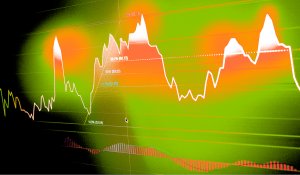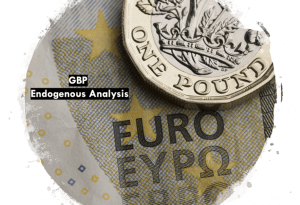It may be an incredibly popular tool but not all forex traders are big fans of using Fibonacci, we’re here to take a look at why this might be the case.
What Are We Talking About Here?
This is no guide to using Fibonacci sequences in trading instead, it’s more a look at why some traders turn their noses up to this approach. That said, it doesn’t hurt to have a quick glance at how traders use this tool. Fibonacci numbers form sequences, inventively known as Fibonacci sequences, which are in turn closely related to the golden ratio. This is a phenomenon in mathematics that has been discovered throughout nature and statistical analysis and eventually made its way into different kinds of trading, including forex trading.
The most common use of Fibonacci in forex trading is to use Fibonacci retracement levels to throw up potential support and resistance lines across your chart that show places where the price might bounce back into a reversal. Put simply, the idea is to use these lines to assess where to enter a trade. In its most basic form, when the price is trending, it should retrace its steps occasionally to bounce off a Fibonacci level before it continues its trend and this is supposed to indicate an entry point.
So, What’s the Problem?
As you might have guessed, the growing anti-Fibonacci movement highlights several different problems with this approach.
The first of these is its abstraction. In other words, it is completely divorced from the realities of the market and relies entirely on an abstract pattern to try to locate trade entry points. There is no reason, the naysayers will tell you, why a mathematical sequence that has thrown up patterns in nature would have an effect or even any value for predicting the price movements of a currency pair. And, indeed, prediction is the name of the game here. Because using Fibonacci retracement levels is an attempt to predict future price movements. This is important and we’ll come back to it later in the article.
People who dismiss and reject the applicability of Fibonacci levels are likely to cite other reasons for price movement, including news events, the movements of the herd (that is the activities of the mass of traders who are often to be found trying to do the same thing at the same time), the sometimes pernicious activity of the influential players in the market, and so on. Of course, this has some weight behind – ultimately, there is no real connection between Fibonacci sequences and the movements of the market – the only connection is that Fibonacci levels and other similar approaches are supposed to guide you in analysing large statistical data sets. The price interactions of currency pairs as determined by the market are said to be such a set.
20/20 Hindsight
But there’s a problem inherent in that. This problem becomes particularly apparent when you take Fibonacci levels for a joyride through a historical chart. Choose any currency pair you like and take a look back through its price movements over a long period. Now try to find those times where Fibonacci levels would have been really useful in providing trade signals. The first thing you’ll notice is that the price regularly – and we mean regularly – just blows straight through any Fibonacci levels you care to put up. This is a problem for using it as an indicator of anything really. An indicator that doesn’t work some of the time is one thing, but one that hardly ever works is much more problematic for a trader.
More importantly than that, those times when it does appear to have worked, where the price is trending but then backtracks before bouncing off a Fibonacci line. Those times are, of course, going to be rare. But it’s not just their rarity that is problematic. It’s also the fact that they are often only noticeable when viewed retrospectively like this. In the heat of the moment, before the candles complete, it is much harder to spot a pattern emerging that could be predicted by a Fibonacci retracement. And prediction is important because that’s what this is all about. Using Fibonacci or any other tool in forex trading that fails to reliably predict where the price is going to be in the future is ultimately not just frustrating but also potentially very financially harmful. It’s just no good if somebody comes along and points out that the price of a given currency pair bounced off a Fibonacci line in the past. That’s old news and it’s no good to you. Remember, you have to make a decision while a Fibonacci-like pattern is still emerging… Or not, as the case may be.
Where Do You Draw the Line?
Another problem with using Fibonacci levels to trade is that there is no clear way of knowing when to stop using them. That is, when do Fibonacci lines stop being valid? Are you using the levels that are only relevant to the most recent swings (either high or low) or do you incorporate lines from further back? If so, how far back can you go before the lines you drew where the price simply crashed through them are no longer relevant? Or should you try to keep it as simple as possible and reduce the Fibonacci lines across your chart only to the most relevant?
The problem is, there are too many questions and too much of a danger of cluttering your chart with a haystack worth of meaningless lines. Because, if you draw enough lines across a chart, the price will definitely bounce off some of them somewhere but they will also lose all meaning. This fuzziness bothers a lot of traders and they will claim that it is for this reason that their opposite numbers – the traders who are committed to using Fibonacci – are constantly having to adapt their approach. The argument is that they have to keep modifying their approach because, at the end of the day, the Fibonacci levels lack clarity to the point that it becomes impossible to know whether they are working or whether they just look like they might be working.
A Little Success…
So why are Fibonacci levels even as popular as they are? Certainly one of the reasons lies in the forex traders’ version of that old saying, “a little knowledge is a dangerous thing” – for forex traders a little success is a deadly thing. Traders often start out by trying to use Fibonacci retracements because they’ve heard so many good things and, if they’re lucky, they might even see some early success in using them. The problem comes further down the road. Because, in the long term, using Fibonacci levels will slowly work less and less well, using them will mean an over-focus on one (potentially very flawed) tool while other tools and opportunities are missed. That early smell of success can be a powerful drug and draws traders into establishing patterns of behaviour that are ultimately harmful.
The Curse of Popularity
Of course, it isn’t always someone’s fault if they do give Fibonacci levels a go. The reason they might is that so many people out there on the forex internet are talking about them. Social media is particularly prone to promoting Fibonacci as though it’s the best thing since sliced bread. And there’s a reason for that, which is that posters can come off sounding very smart and knowledgeable indeed if they point out where price is approaching a Fibonacci level. Much rarer, to the point of being non-existent, are accounts that will come back and post an apology, where they say, “Hey, sorry, I said the price was approaching this and this line but it just crashed through as though the line wasn’t there.” Another thing you’ll almost certainly have noticed from forex-related social media accounts is that they will often point out where a Fibonacci retracement has taken place in the past. Unfortunately, this is of no use to anyone actually trying to trade like that because, once it’s happened there’s nothing to do other than appreciate its beauty – if you’re into that sort of thing. No actual use can be gleaned from pointing out historical occasions where a retracement has worked.
How to Proceed?
Whether or not you found the arguments in this article convincing is kind of irrelevant. The thing to do with any tool you encounter – whether it’s a popular one that everyone is shouting about from the rooftops or a niche tool you discovered through hard graft – is to test it yourself thoroughly. This is as true of Fibonacci retracements as it is for anything else. In that sense, it might also be useful or fun for you to wait until somebody on social media posts one of those cherry-picked examples of a Fibonacci retracement coming off perfectly and then go back and see if you can figure out what levels they were using.
If you do remain unconvinced and intend to carry on using Fibonacci approaches to trading, there is one other very important thing to be aware of. Those traders who have committed to this discipline and have made it work to one extent or another have done so by combining Fibonacci with a carefully selected set of other technical analysis tools. So, if you do plan to use Fibonacci retracements, make sure that you are ready to do so in a coordinated approach that also relies on other indicators and tools to help you assess whether your Fibonacci-based hunch is really likely to turn into the price movement you were hoping for.






